Last Updated on: 13th December 2024, 10:02 pm
While Aswan is just a few hours from Luxor by rail, the land between the two cities is home to a myriad of ancient wonders. During my travels, I opted for the slow route, arranging for a driver to make several stops along the way – the first two of which were Esna and El Kab. While neither is essential for the casual tourist, they’re well worth visiting for those with a deep interest in ancient Egyptian history.
Esna is a small temple built during the Greco-Roman era. El Kab, meanwhile, consists of a series of tombs and temples that largely date back to the New Kingdom. The site, however, is one of Egypt’s oldest inhabited areas.
Esna and El Kab can be combined with the temples of Edfu and Kom Ombo, provided you’re starting the journey in Luxor and ending in Aswan (the reverse is also possible). See below for more details on arranging the trip.
Esna: The Temple of Khnum
Departing from Luxor at around 6:00, my driver and I arrived at Esna just as the Temple of Khnum was about to open. After a quick breakfast of roadside falafel, I made my way through a sleepy alley of small souvenir shops before the temple came into view.
The Temple of Khnum was the primary temple of the ancient city of Latopolis. While the temple was started by the Ptolemies as early as 150 BC, it was finished by the Romans, with the last inscriptions dating from 250 AD.
The only thing that remains of the temple now is its Hypostyle Hall, while the rest is still buried underneath the modern town of Esna. When Napolean and his men arrived in the 19th century, only the hall’s roof was peaking up through the ground.
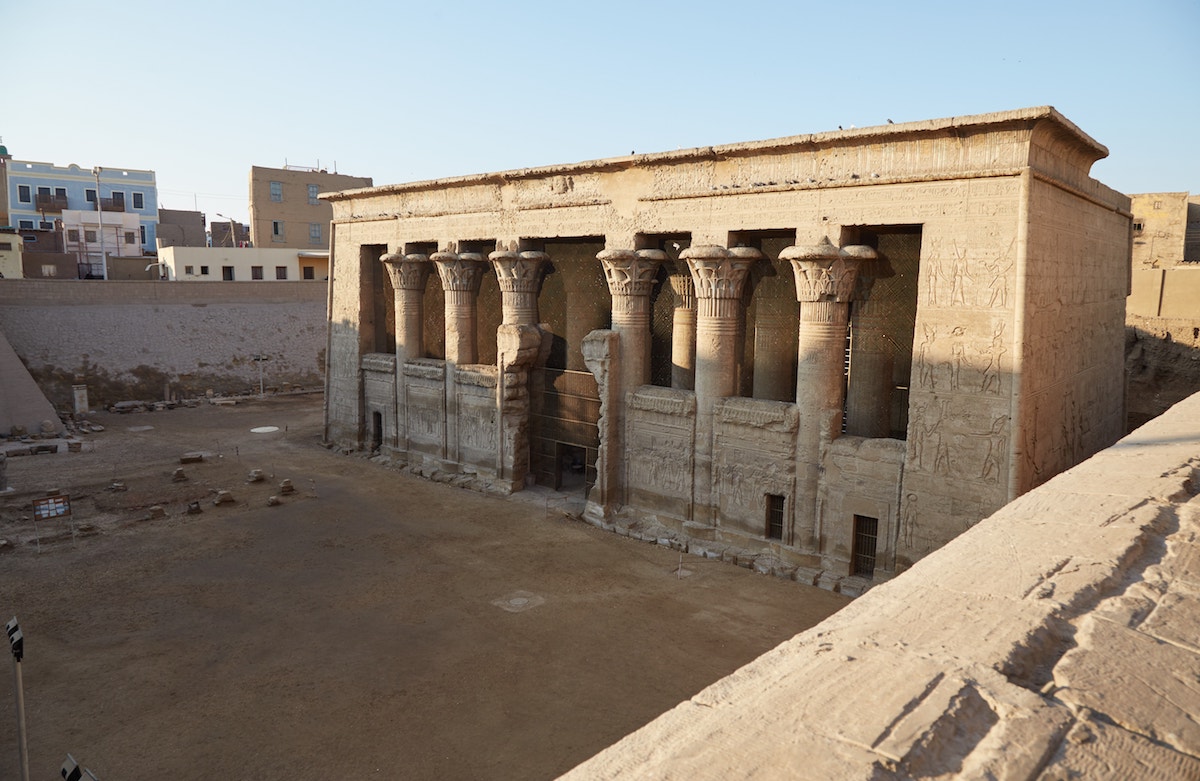
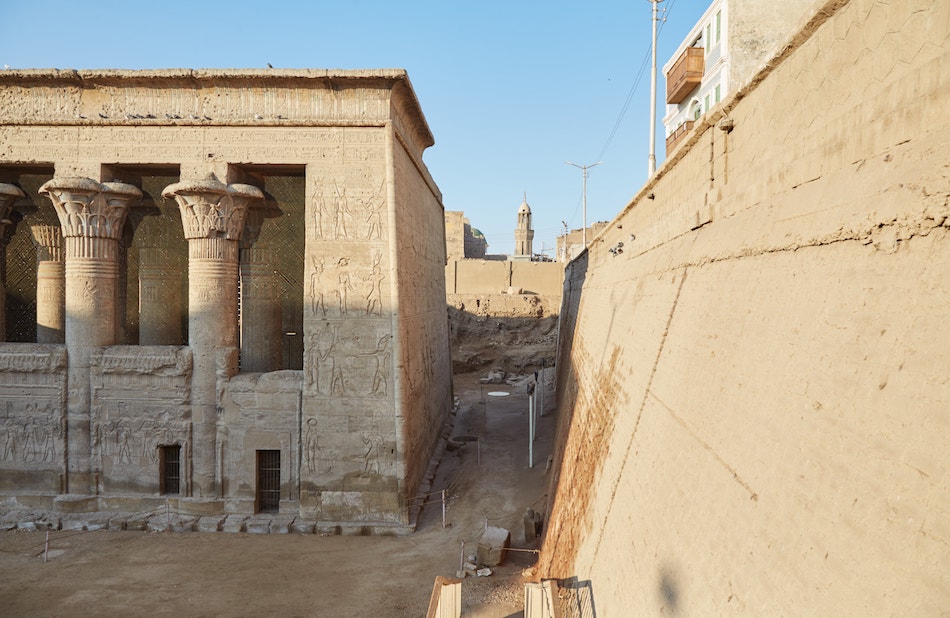

One of the most remarkable things about the Temple of Khnum is the tremendous difference in height between it and the surrounding town.
The regular Nile floods deposited only under a centimeter of silt every year. But looking at the temple today, we can see the dramatic cumulative effect the process had after nearly 2,000 years!
It really makes one wonder what other intact treasures are waiting to be discovered underneath modern Egyptian cities. In fact, several days later, I’d accidentally stumble upon a similar temple in the backstreets of Aswan (more below).
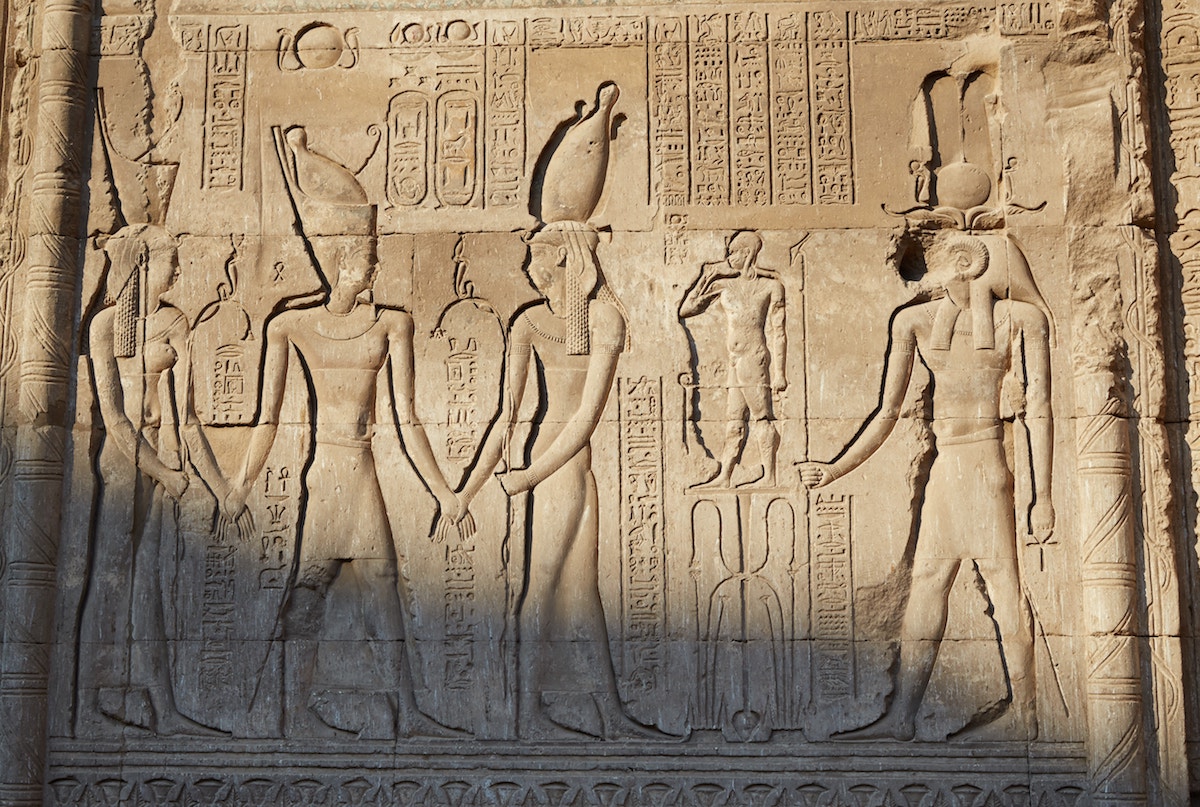
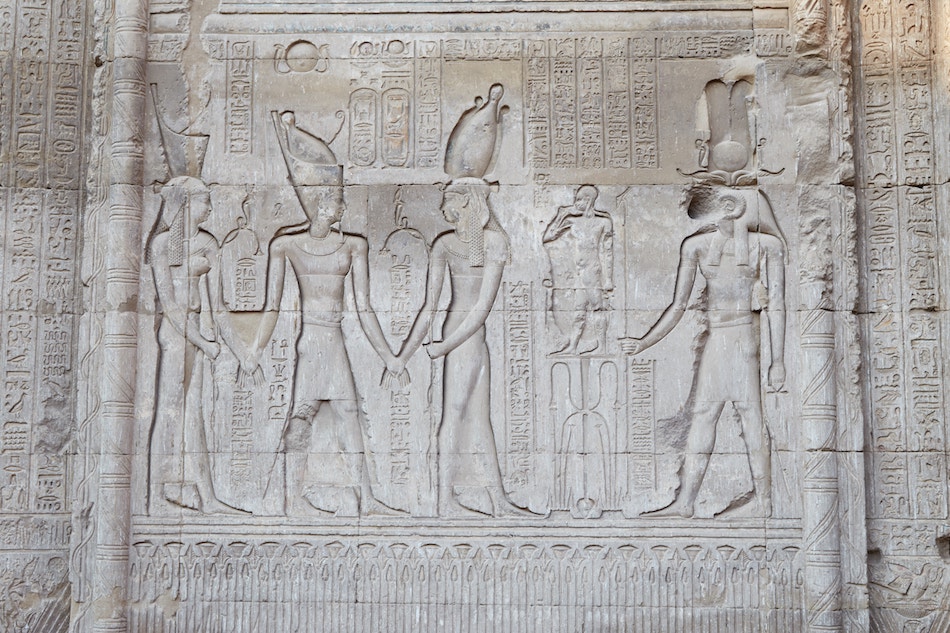

Considering how the temple got buried due to years of siltation, it’s oddly fitting that it was dedicated to Khnum, the god in control of the Nile River.
Khnum’s abode was on Elephantine Island in the middle of Aswan, a site still inhabited today. In addition to controlling the ever-important annual Nile floods, Khnum was revered as the creator of every living thing.
The Egyptians depicted the ram-headed god as a potter who fashioned living creatures out of clay. He is just one of several creator deities in the Egyptian pantheon, however. Though he carried out the creative act, Khnum was simply following the plans of Ptah, the divine architect.
Khnum is typically associated with Neith, goddess of weaving, and with Satet, a form of Isis associated with Sirius. And throughout this temple, we can see Khnum together with the lion-headed Menhyet, an alternative form of Neith.



Outside the temple, we can see the typical ceremonial scenes of the king in the presence of the gods, presenting them with offerings and receiving their blessings.
There are also typical military reliefs, such as the classic scene of the pharaoh holding a group of prisoners by their hair.
But this scene can’t represent the pharaoh smiting an army of foreigners, as the king here is actually Roman Emperor Domitian! The battle scenes at temples, of course, were more symbolic than they were historical.
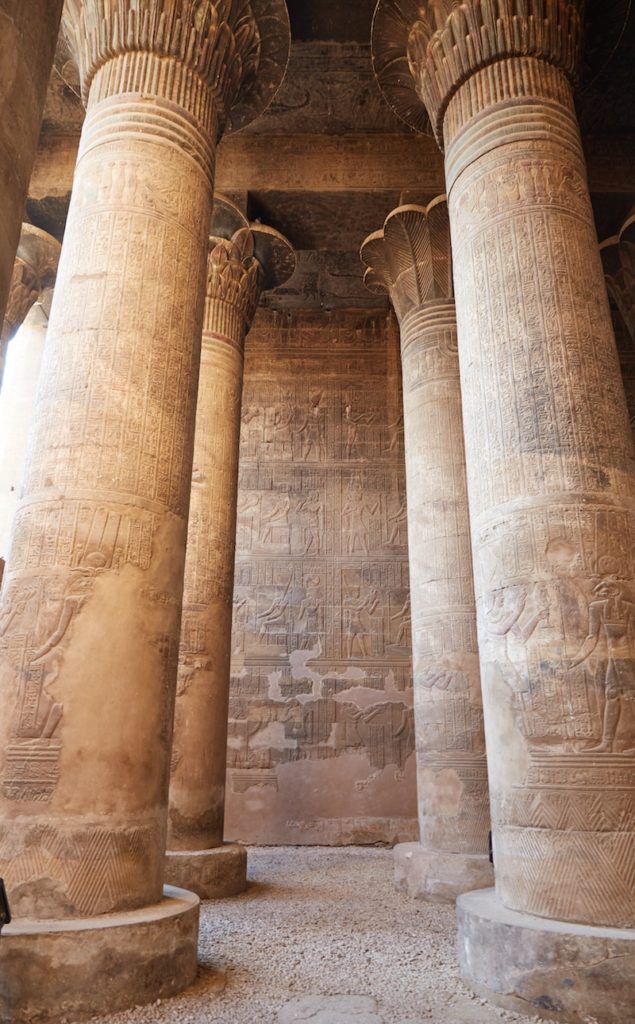

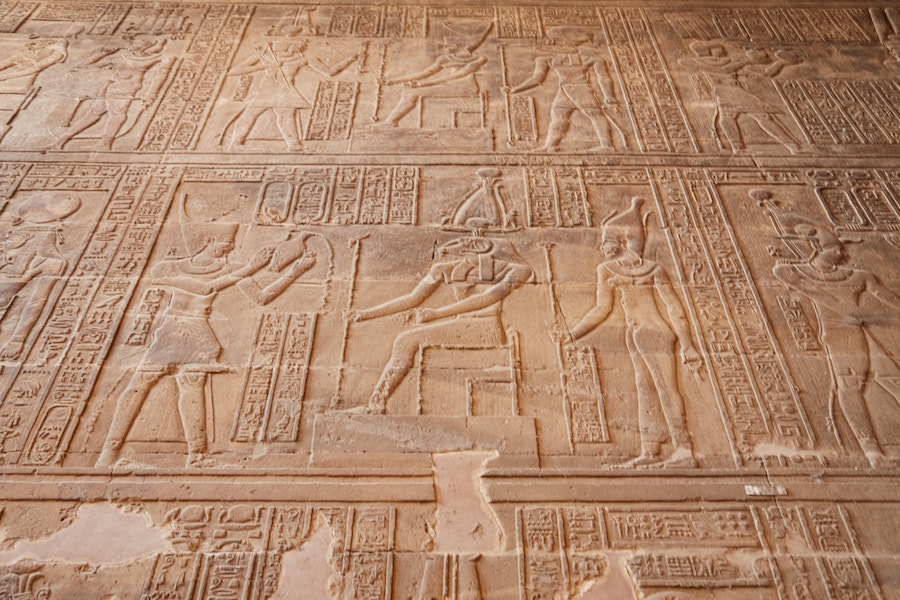
The Hypostyle Hall consists of six rows of columns, making for seven aisles in total. While it can’t compete with the magnificent Hypostyle Hall of Dendera completed around a century earlier, there are still plenty of interesting details here.
Among the most interesting reliefs are those on the ceiling. As is typical at Egyptian temples, the ceiling reliefs had a cosmological significance.
And here we can see some traditional symbolism, such as a solar barque, beings that represented the decan stars, and signs of the zodiac.
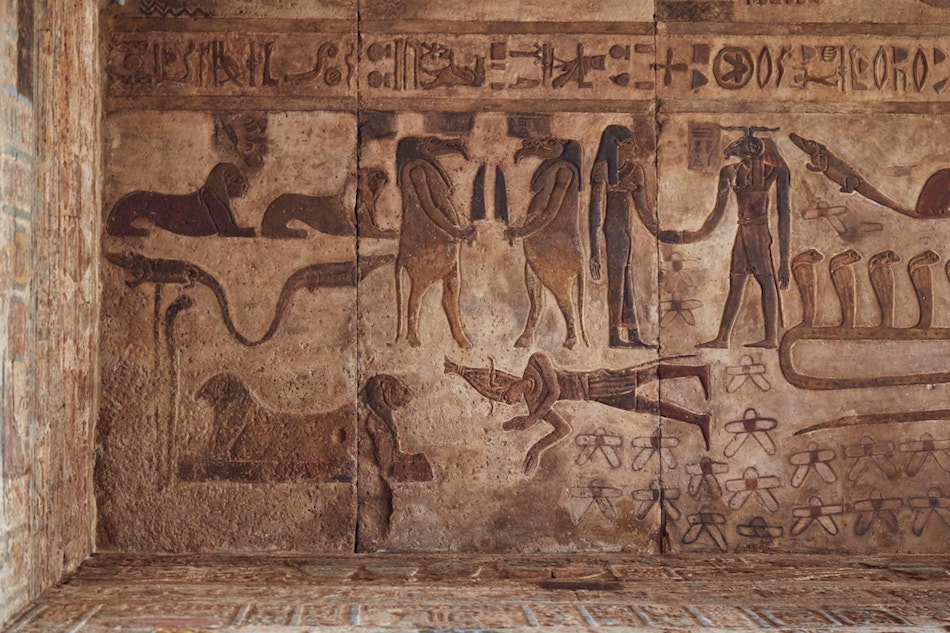
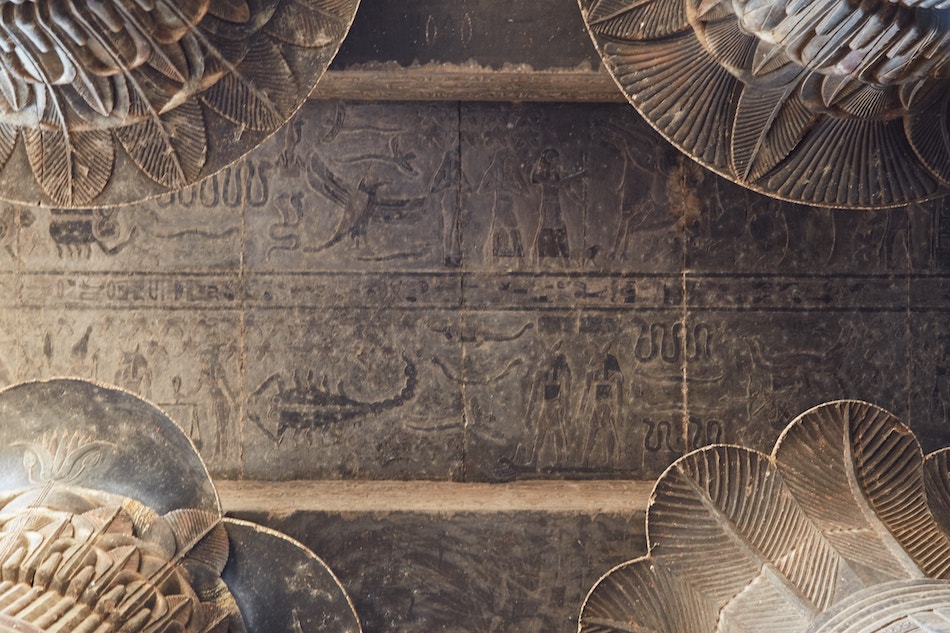

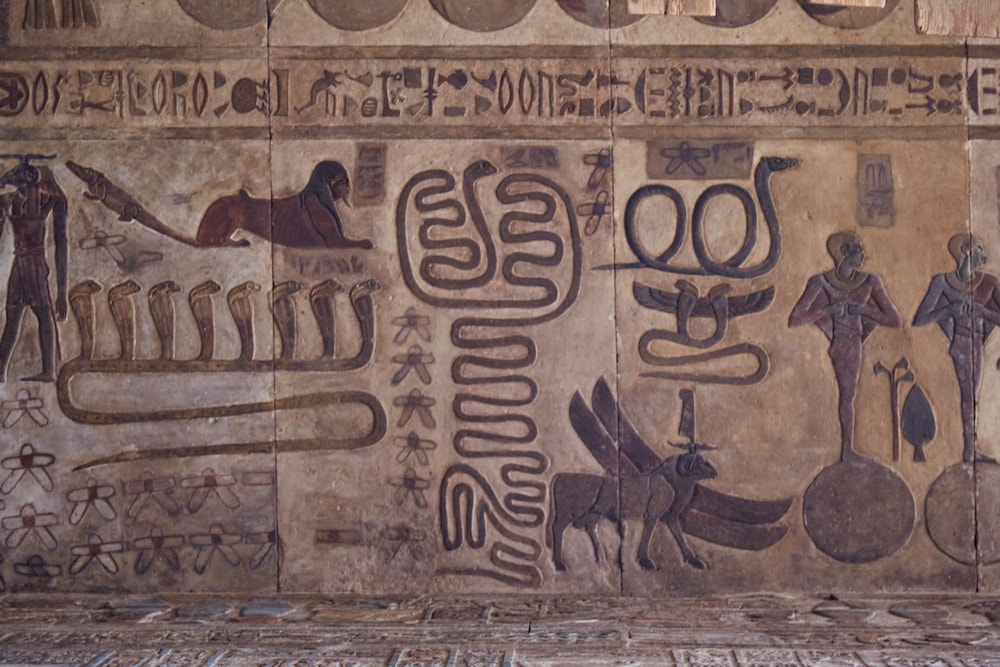
But there are still a number of scenes here that nobody can quite explain. For example, there’s a slug with two human heads and a tree growing from its back. Some serpents have dozens of legs, while others have multiple heads!
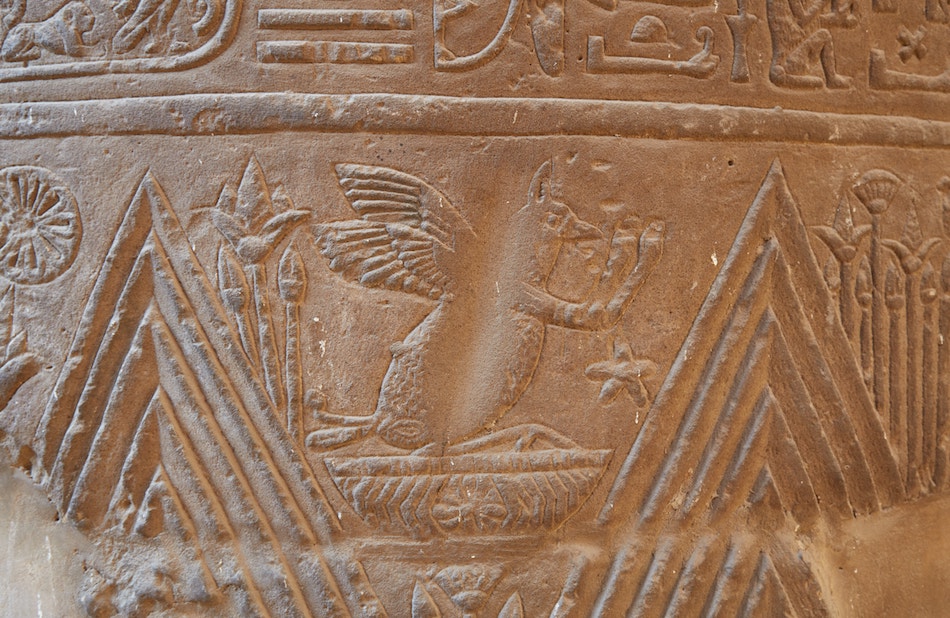
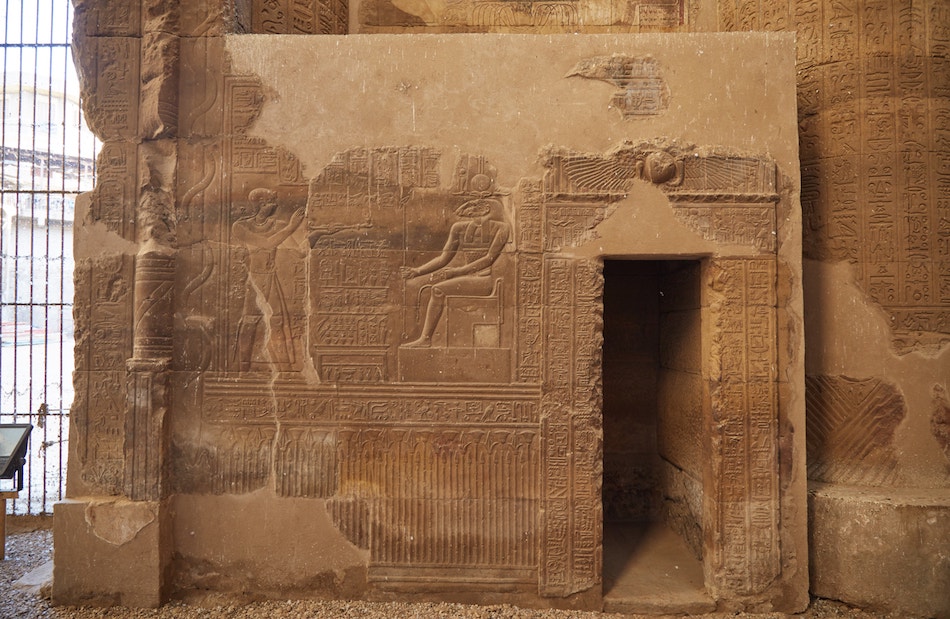
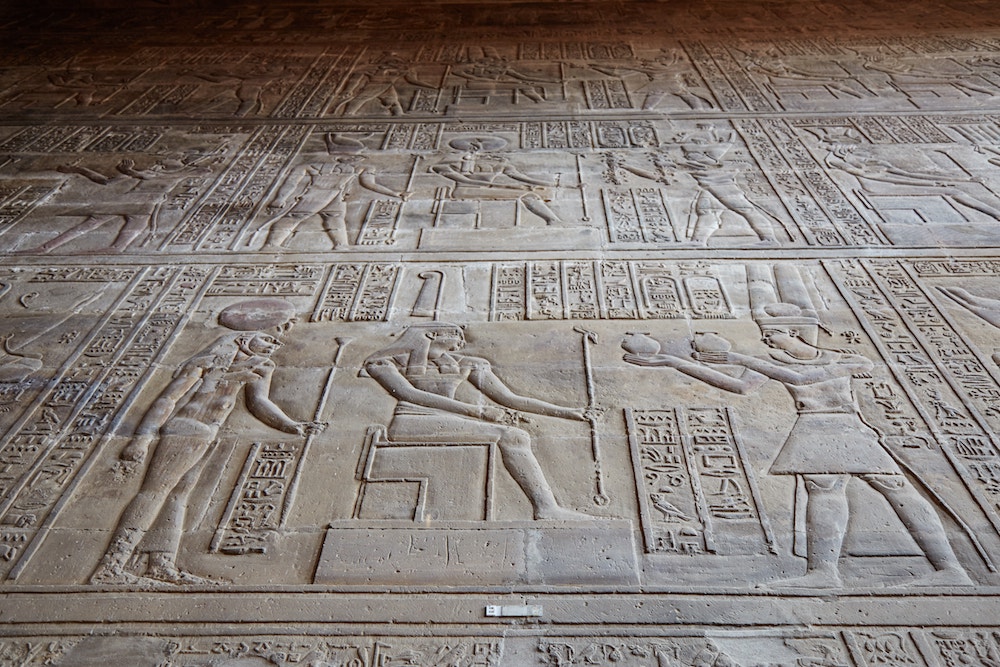
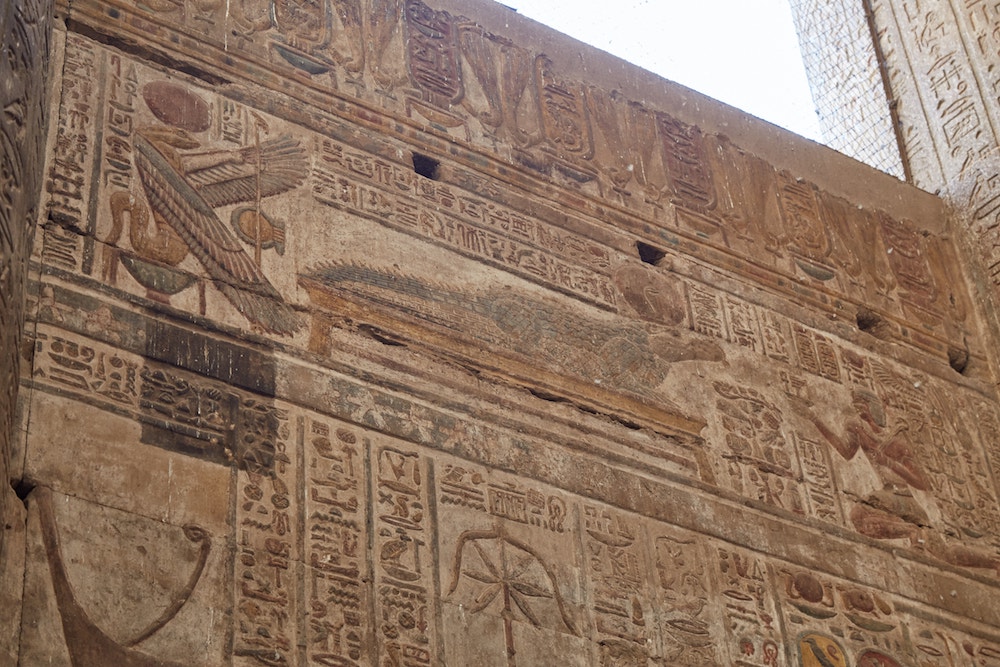
At either end of the temple are sections containing strange hieroglyphic puns and wordplays related to rams and crocodiles. The Egyptian language had changed dramatically by Greco-Roman times, and scholars have yet to decipher the meaning behind these peculiar word games.


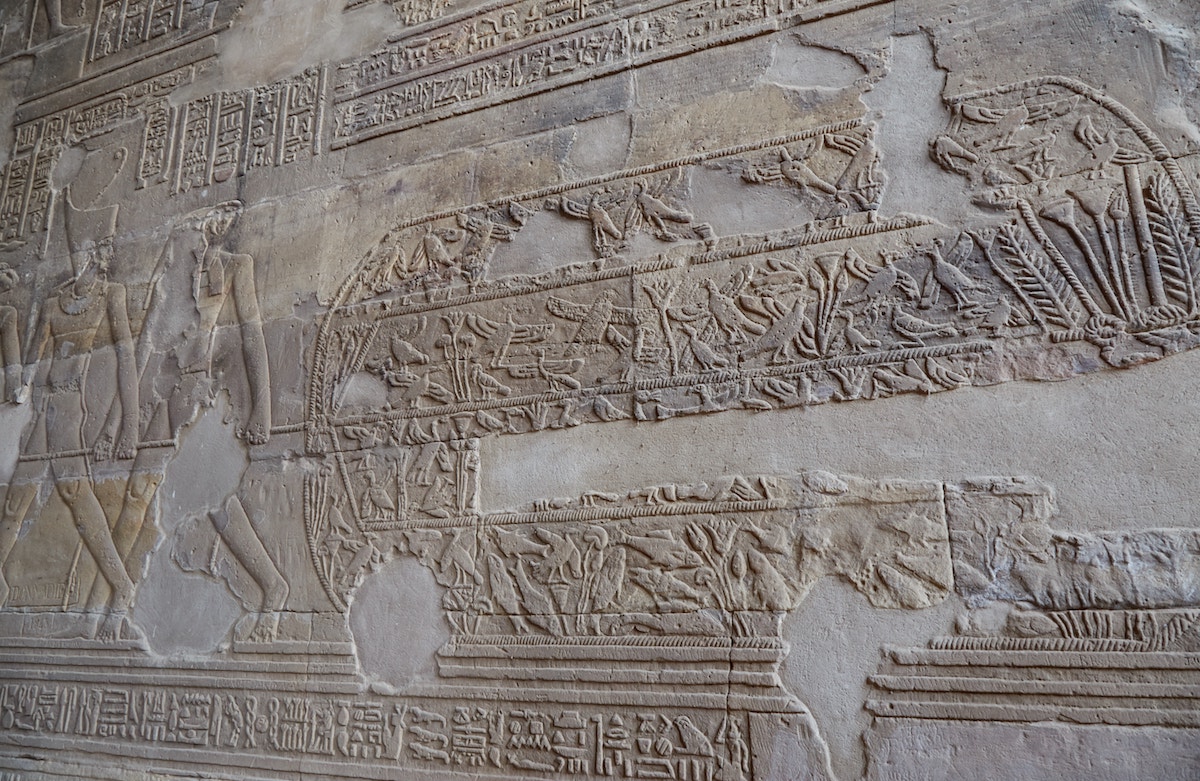
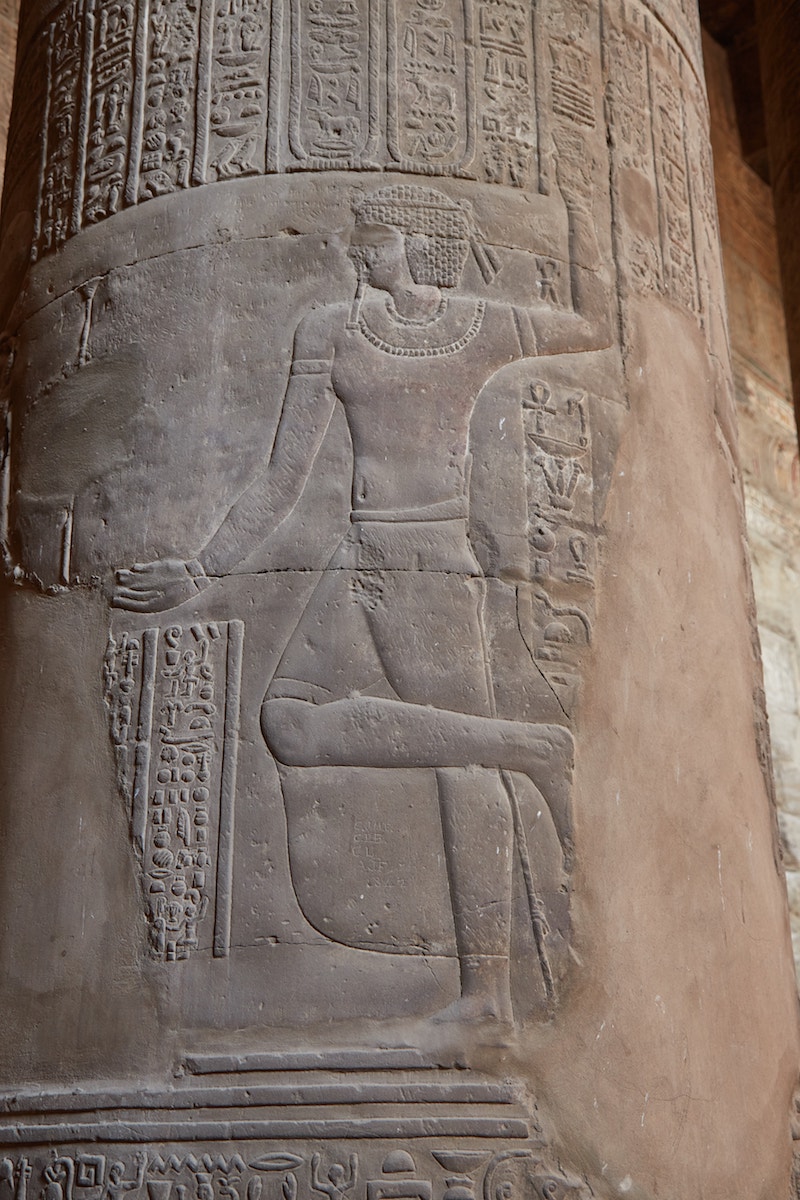
The north wall has a symbolic bird and fish netting scene. These scenes date all the way back to the Old Kingdom and were traditionally drawn in nobles’ tombs. But here and also at nearby Edfu, we see the same scene on temple walls. And this time it’s the gods and pharaoh (or Emperor Commodius, in this case) doing the netting.
Clearly, the scene was always symbolic, and not merely a charming depiction of everyday life. It possibly represents the importance of quieting the mind and mastery over one’s impulses.
With just this one room to explore, a visit to the Temple of Khnum at Esna shouldn’t take you more than an hour.
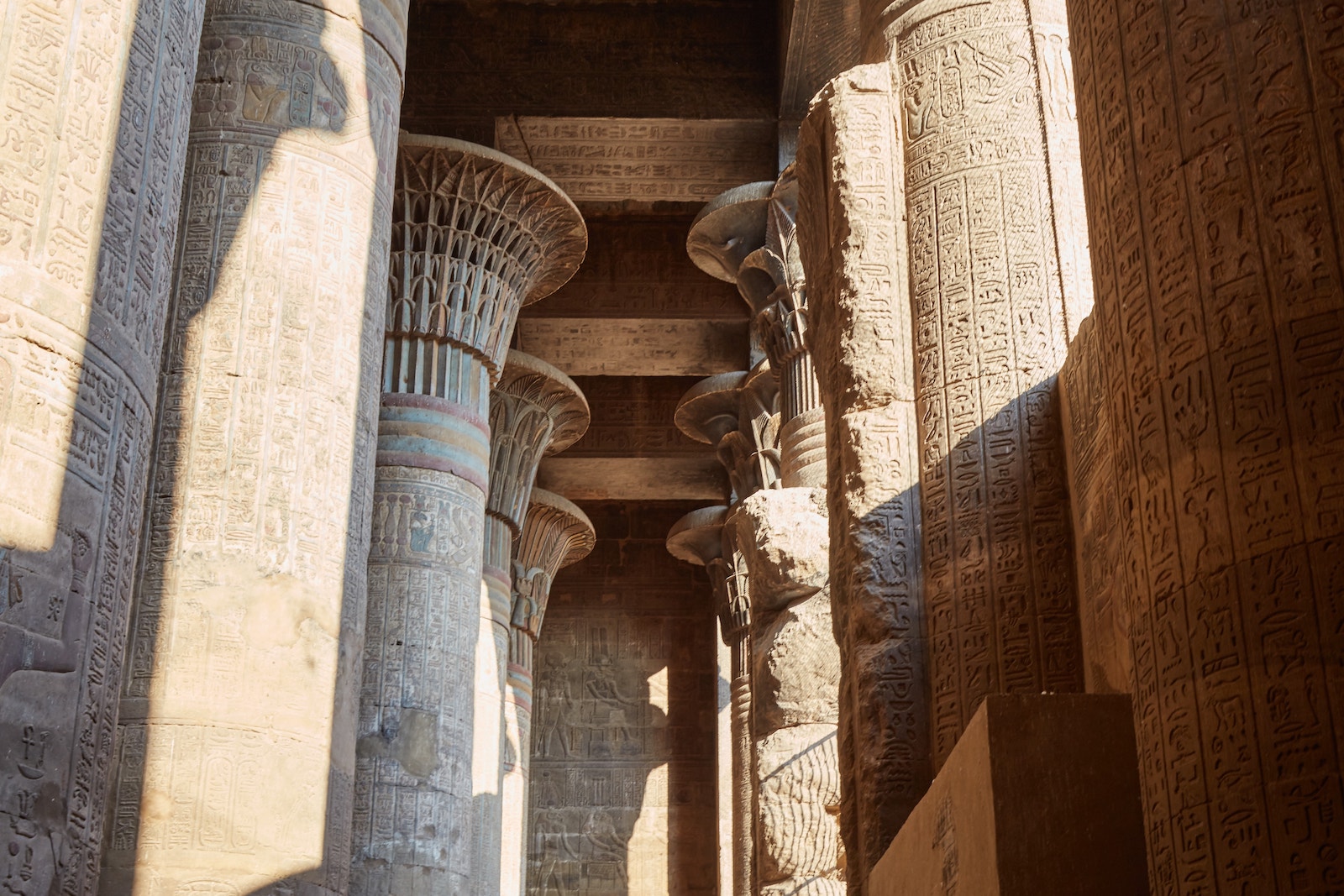
As mentioned above, several days after my visit to Esna, I made an interesting find in Aswan. While aimlessly walking through a residential district, I happened to come across a strikingly similar temple that had just been dug up.
There were no mentions of the temple online at the time. But the friendly Aswan locals, upon seeing my interest, invited me for tea and explained a little bit about it. (I later realized that the ‘bench’ we were sitting on was actually an ancient granite pillar!)

They said that the German excavation team that normally works on Elephantine Island was just about finished clearing it out. (Update: As of early 2021, the temple is now officially open for visitors.)
The temple, constructed during the reign of Ptolemy III (r. 246-222 BC), was primarily dedicated to Isis. But interestingly, it was additionally dedicated to the triad of Khnum, Satis and Anuket.
If you’re interested, the temple is located on the east side of the main highway, a few hundred meters north of the Aswan Stadium.
El Kab
Further south, El Kab is an incredibly ancient site, though it’s hardly known by most visitors. In fact, even some people I met in the local tourism industry had never heard of it!
Considering the obscurity of the place, I was surprised to encounter large tour groups upon my arrival. It now seems to be a common stop on Nile River cruises, though few visitors actually make it out here by car.

El Kab is situated about 80 km south of Luxor on the east bank of the Nile. It sits just opposite the ancient city of Nekhen (Hierakonpolis), an early capital of Upper Egypt during the Predynastic era.
Amazingly, Nekhen dates back to at least 3500 BC, though the archaeological site there is completely off-limits to visitors. El Kab is just as old, but the accessible sites for visitors all date back to the New Kingdom.
Nearby the entrance is a series of four rock-cut tombs, while there are a few small temples much deeper in the desert. The tombs are small, consisting of only a single room. But they contain some interesting scenes, while one, in particular, is of major historical importance.
The Tomb of Renni
Starting over at the far left is the Tomb of Renni. Renni (c. 1526 BC) ruled during the reign of Amenhotep I, making this older than any of the open tombs in Luxor!
His official title was ‘Overseer of the Priests of Nekhbet.’ Nekhbet, symbolized by the vulture, was the prominent patron deity of Upper Egypt. And El Kab in particular was considered to be her abode.

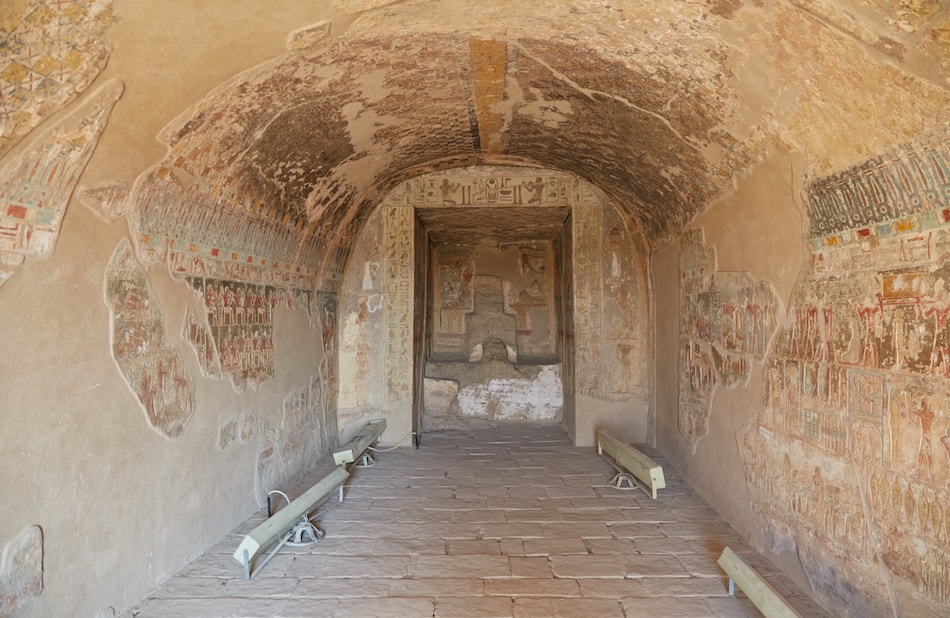
The tomb is largely damaged today. But looking around, you can see some agricultural scenes, a chariot being drawn by two horses and a scene featuring some dancers. The statues in the niche at the back have been almost completely destroyed.
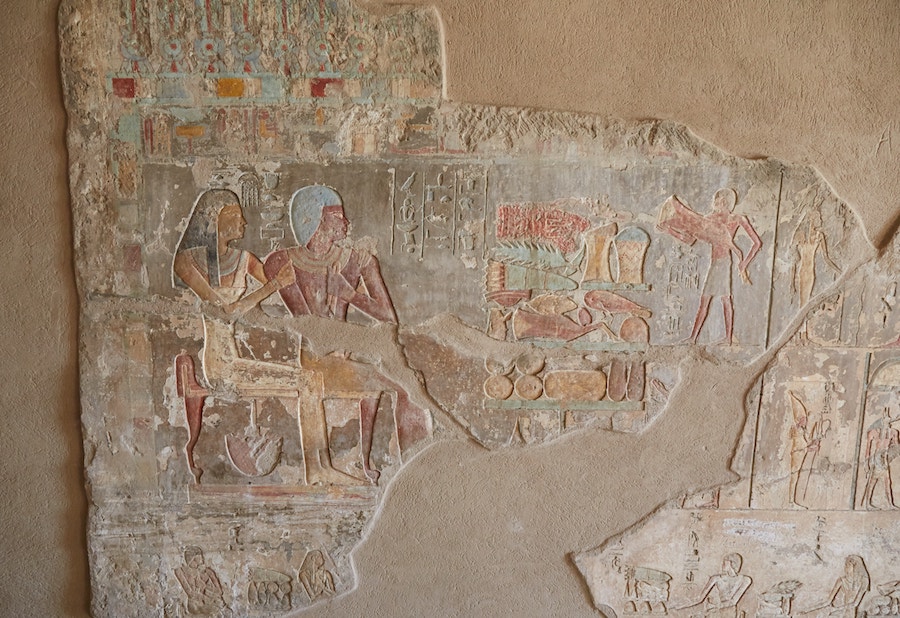


Tomb of Setau
Next is the tomb of Setau, who lived in the 12th century BC during the reign of Ramesses IX. Like his tomb neighbor Renni, Setau was also a priest of Nekhbet, though he lived about 400 years later!



This tomb is also badly damaged except for the right wall. It contains four entire registers showing the deceased and his wife sniffing lotuses. Elsewhere is a scene of Nekhbet in a solar barque, though it’s not easy to make out.
Tomb of Ahmose, son of Ibana
The Tomb of Ahmose, son of Ibana is highly valuable for the study of Egyptian history, as it provides important information on the mysterious Second Intermediate Period.
Ahmose, son of Ibana, not to be confused with Pharoah Ahmose I, was a high-ranking soldier who served under multiple kings of the 18th Dynasty. And he was also instrumental in ushering in the historical era we now call the New Kingdom.
Throughout the Second Intermediate Period, Egypt was under occupation by a group of Asiatic foreigners known as the Hyksos. And Ahmose, son of Ibana led a military campaign to drive them out for good.
In fact, the autobiography on his tomb wall is the only place in Egypt which describes these military campaigns!


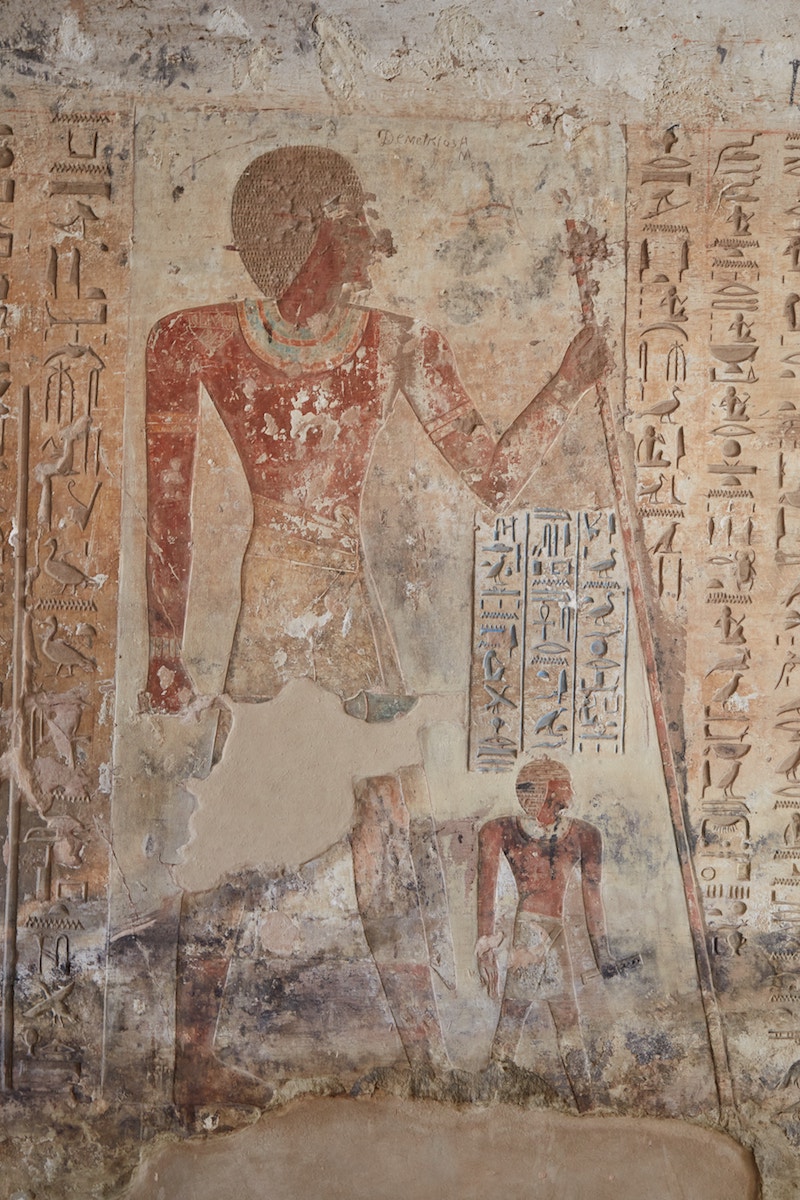
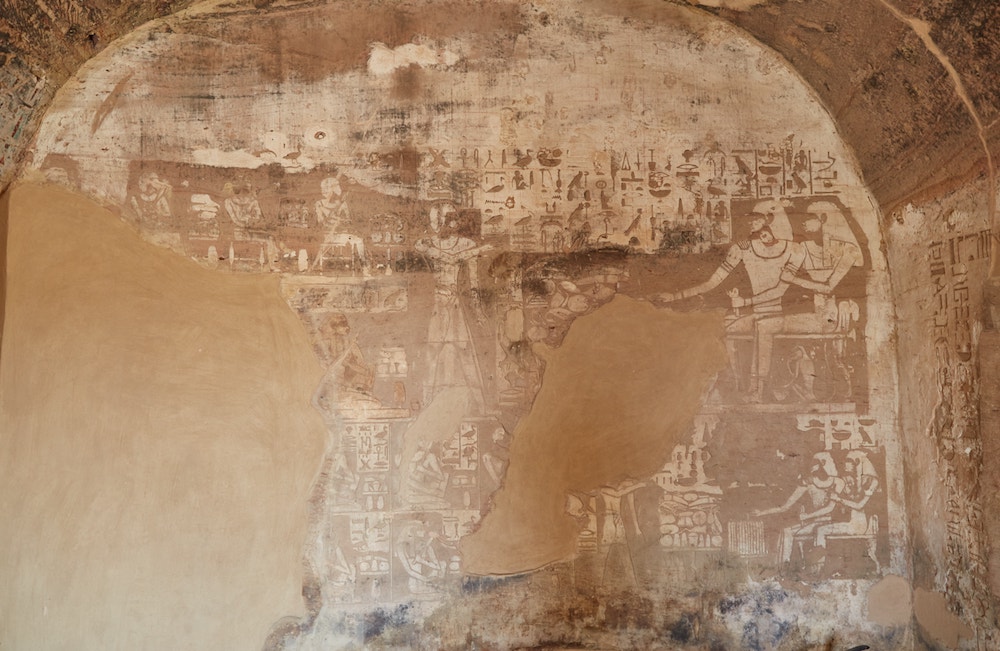
The hieroglyphs detail the siege of Avaris, the Hyksos capital in the eastern Nile Delta region. The general forced them out together with Pharaoh Ahmose I, the founder of the 18th Dynasty. Ahmose, son of Ibana would also serve under Amenhotep I and Thutmosis I.
And he’d go on to play an important role in Thutmosis I’s military expansion into Asia, campaigning as far north as the River Euphrates. Additionally, he led numerous campaigns down south into Nubia.

Surely, the recent memories of the Hyksos occupation had a big impact on Egyptian foreign policy during the 18th Dynasty. The fear of another occupation likely motivated the ‘Thutmosid pharaohs’ to go on the offensive and carve out a large empire.
Tomb of Paheri
The Tomb of Paheri is the most interesting of the four visually. Paheri was the nomarch (Egyptian territorial ruler) of El Kab during the reign of Thutmosis III. And he was also the grandson of Ahmose, son of Ibana.
It’s a colorful tomb that contains many scenes from both daily life and religious ceremonies.

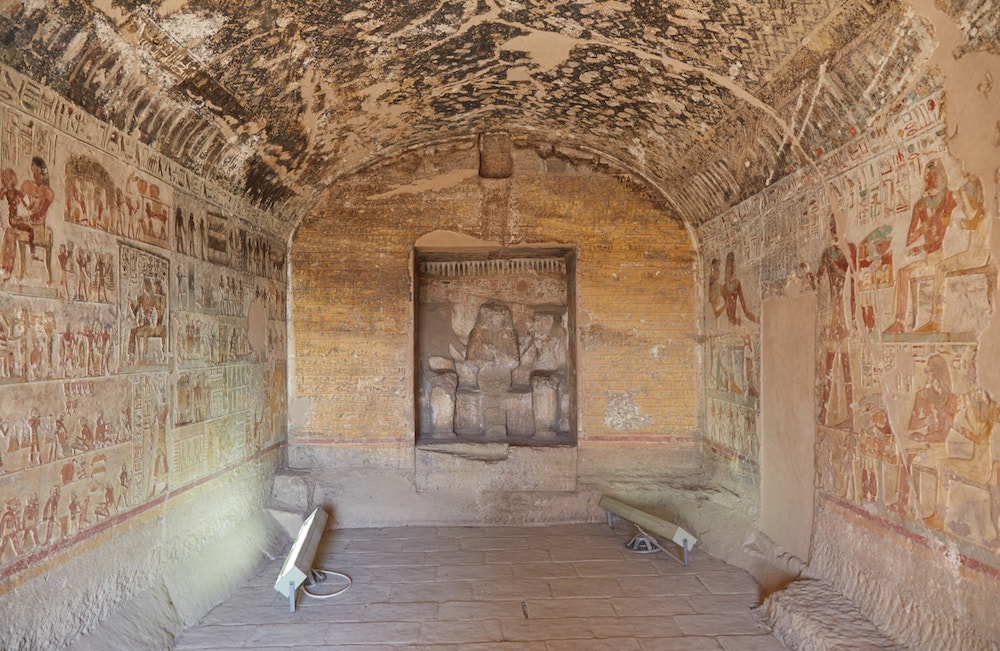
On the left wall, we can see Paheri going about his official duties as both the local ruler and as a scribe. The various registers also display the agricultural practices that took place in the region throughout the entire year.
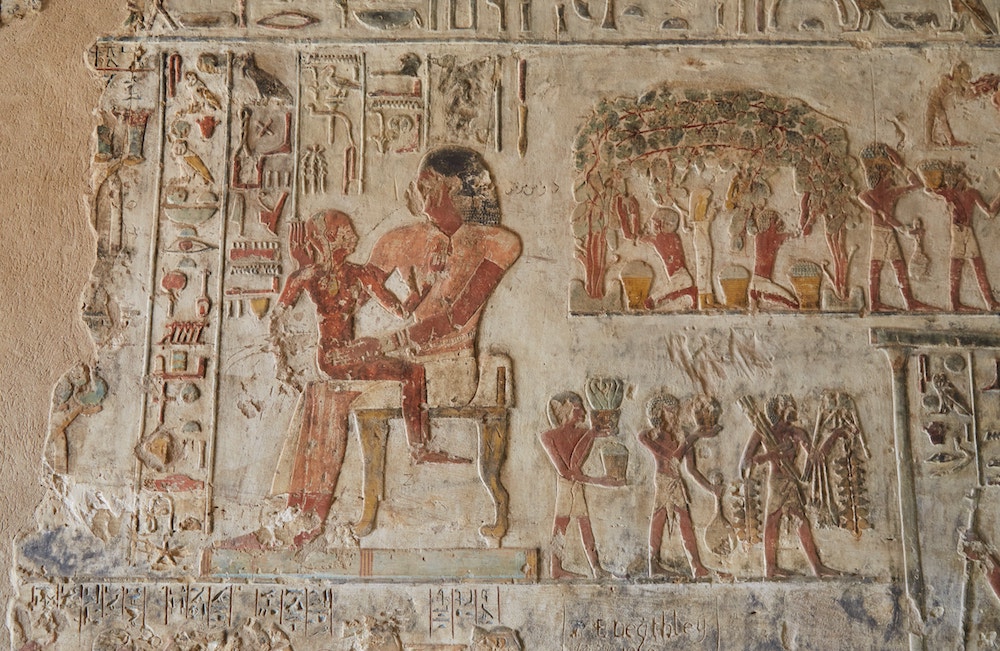
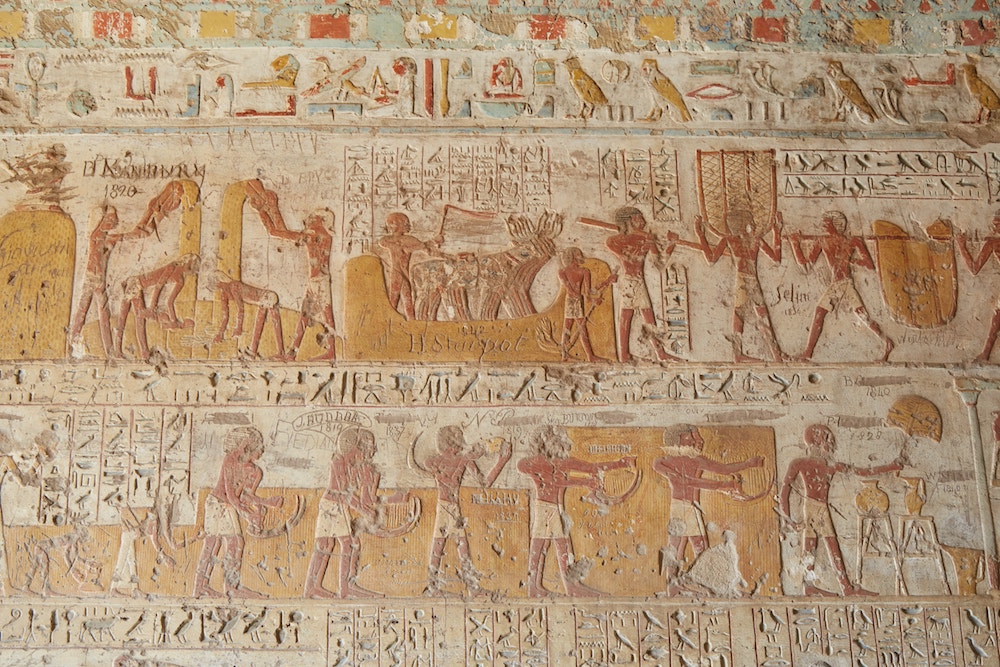

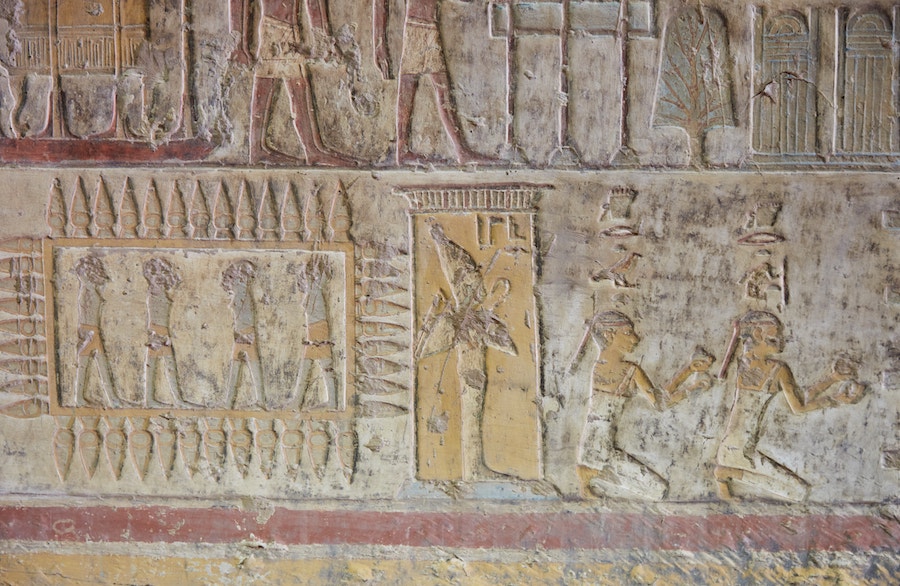
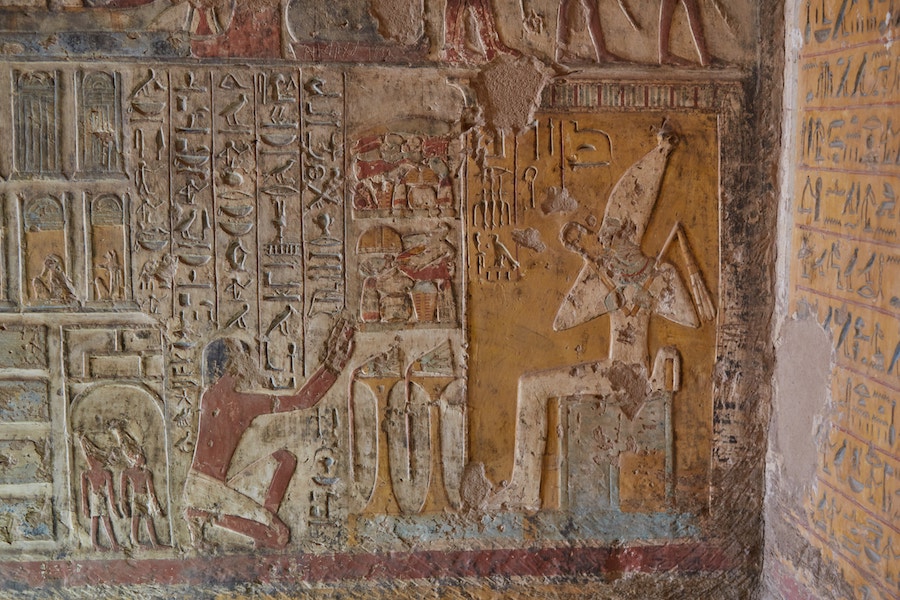
Other scenes represent fishing and hunting, harvesting wine and mining for gold. We can also see funerary scenes and the deceased praying to Osiris, lord of the underworld.
Annoyingly, there’s a ton of graffiti left by 19th-century visitors right over the artwork. Be that as it may, this is a very interesting tomb that easily rivals many of those at Luxor.
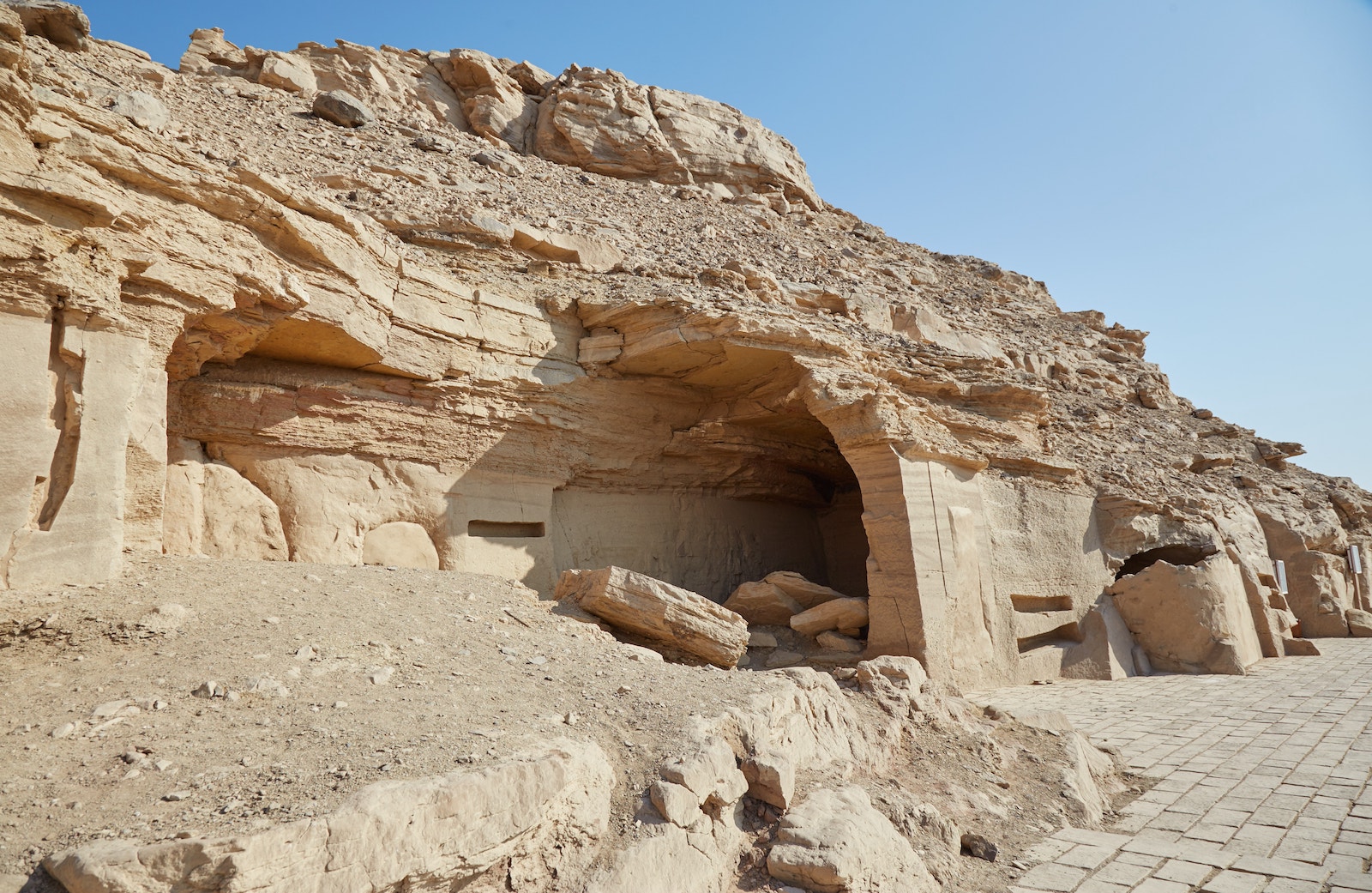
The Temple of Thoth
As mentioned above, there’s more to see deeper in the desert in an area called Wadi Hilal. The road is not well paved, but it’s still accessible, even with a normal vehicle.
Don’t be surprised if your driver is hesitant at first. You should also expect a local staff member to hop in the car to direct the way.
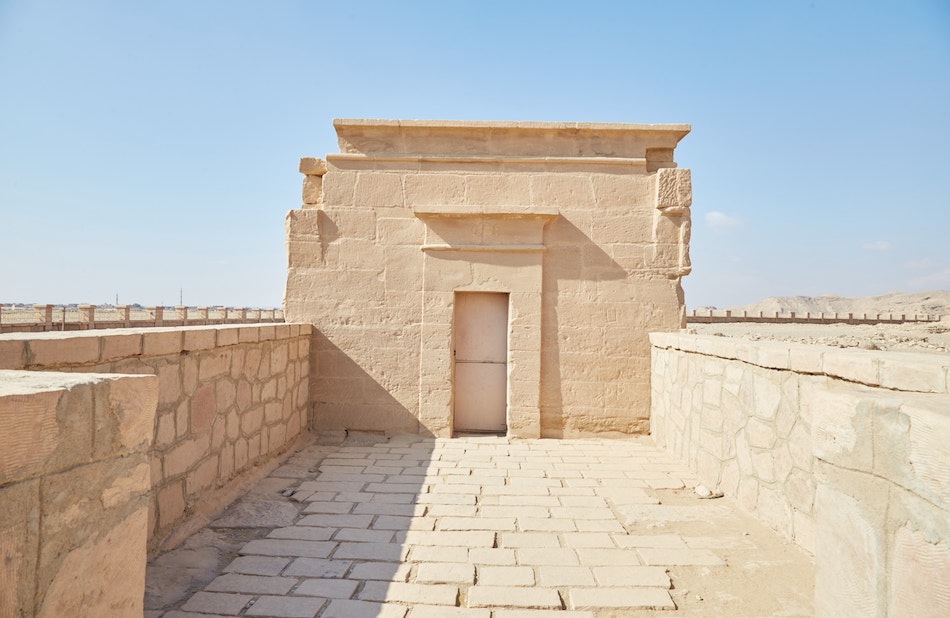
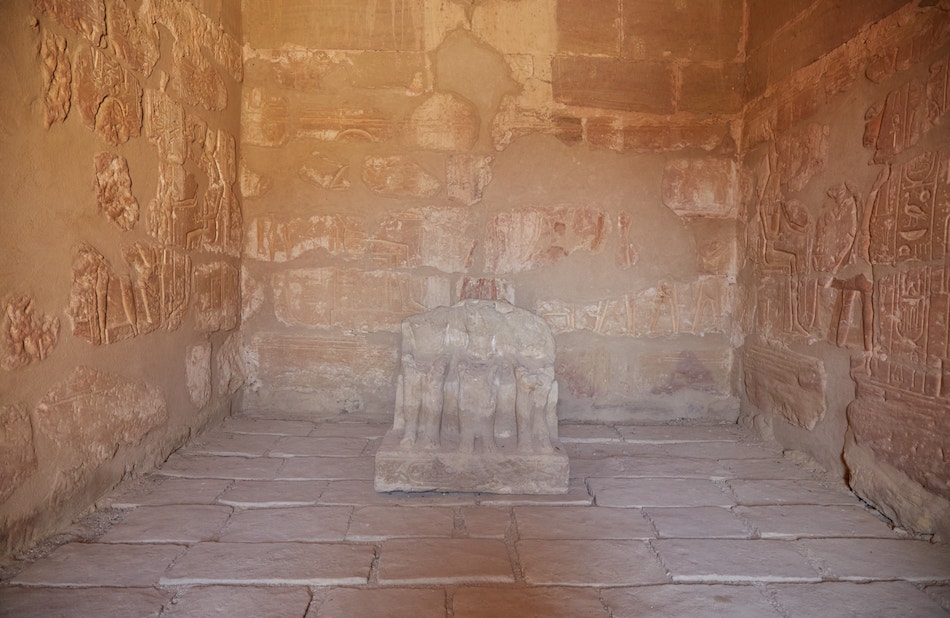
The first stop is a temple complex featuring two small structures, the first of which is the tiny Temple of Thoth. It was first established during the reign of Ramesses II by Setau, the king’s Viceroy of Kush (Nubia). It was then renovated during the Ptolemaic period.
Not much is left, though you can make out a few reliefs if you look closely.
The Temple of Shesmetet
The nearby Temple of Shesmetet was established at the same time and also by Setau. Shesmetet is a relatively obscure lion-headed goddess that was popular in this area. She represents the eye of the sun god Re.
According to legend, she grows angry in winter and heads south to Nubia. But every year in summer, Thoth convinces her to return to Egypt, which explains the Thoth temple built nearby.
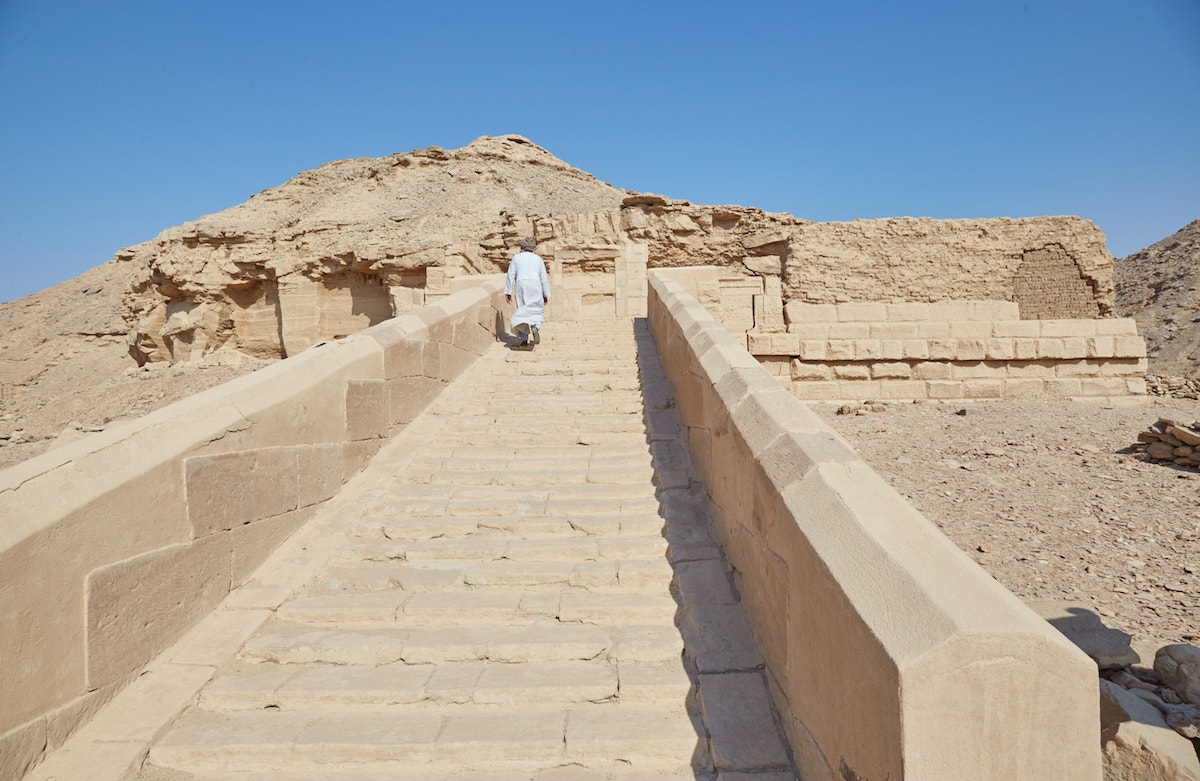


The raging lioness must also be pacified upon her return, a legend remarkably similar to that of Hathor. Shesmetet was also associated with the star Sirius and its rise on the Egyptian New Year.
Sadly, the reliefs are badly damaged here, but it’s worth heading inside for at least a few minutes.
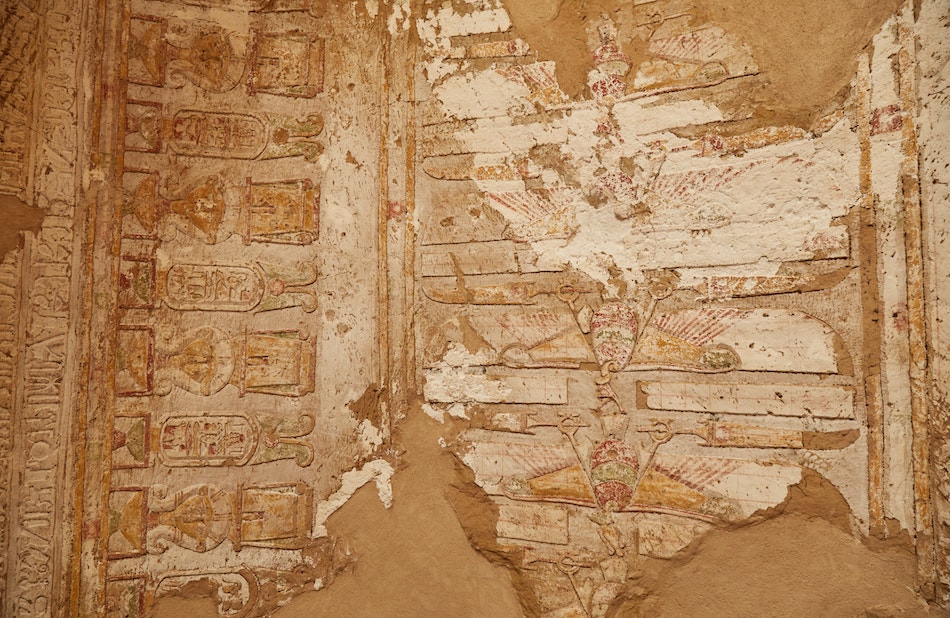

The Temple of Amenhotep III
After several minutes of driving deeper into the desert, you’ll arrive at another small temple that’s much better preserved. It was started by Thutmosis IV and finished by his son Amenhotep III.
And it was built in dedication to Nekhbet, the vulture goddess who ruled over Upper Egypt. During processional festivals in honor of the goddess, the solar barque was temporarily kept at this temple as the proper rituals were carried out.
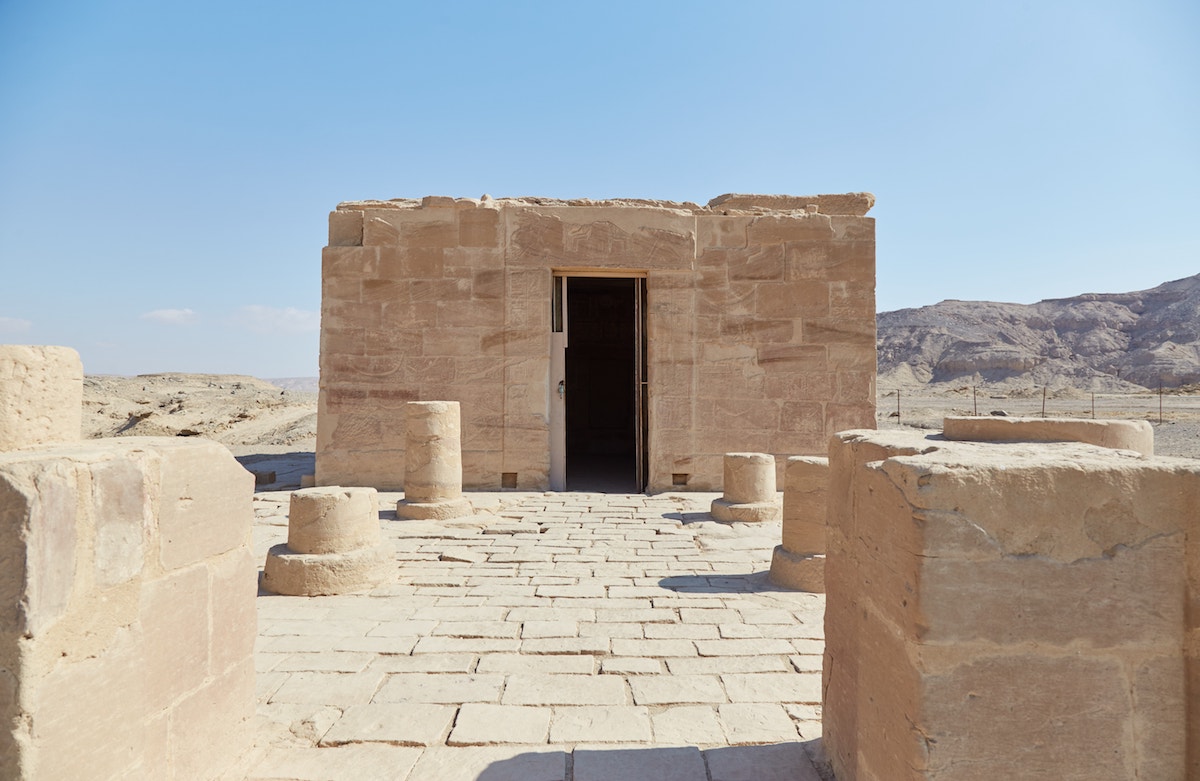
Notably, the particular form of Nekhbet worshipped here is associated with Hathor, hence the Hathor capitals you’ll see inside. To make matters more complex, Nekhbet was also associated with Shesmetet, the ‘Wandering Eye of Re’ mentioned above.
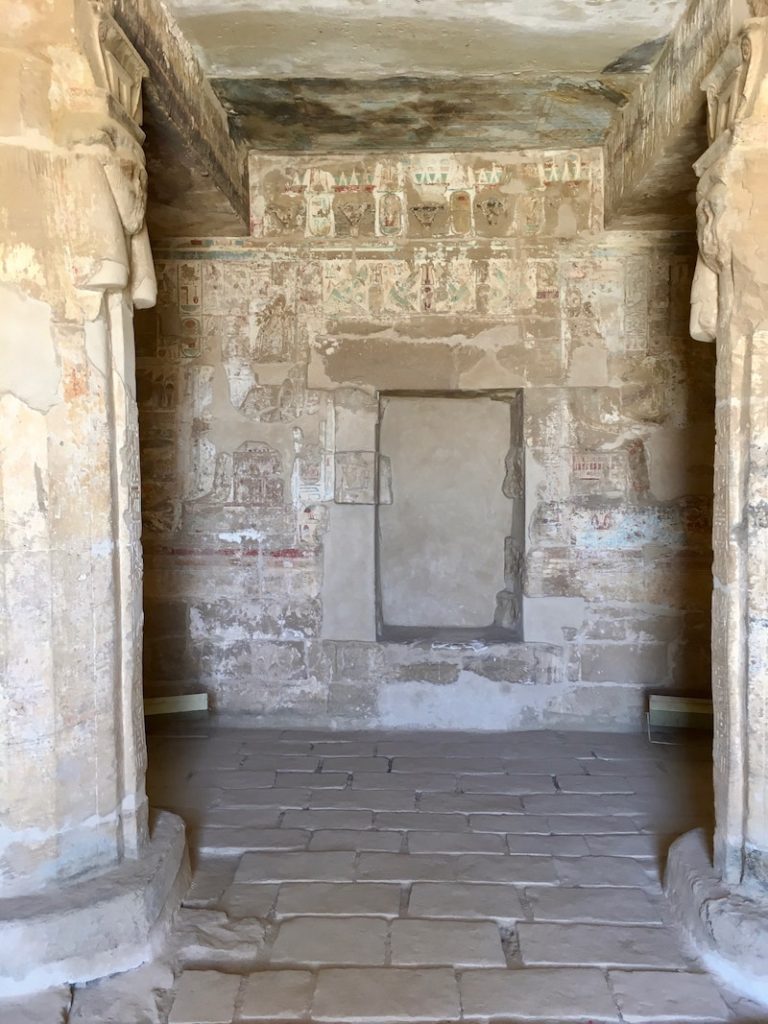
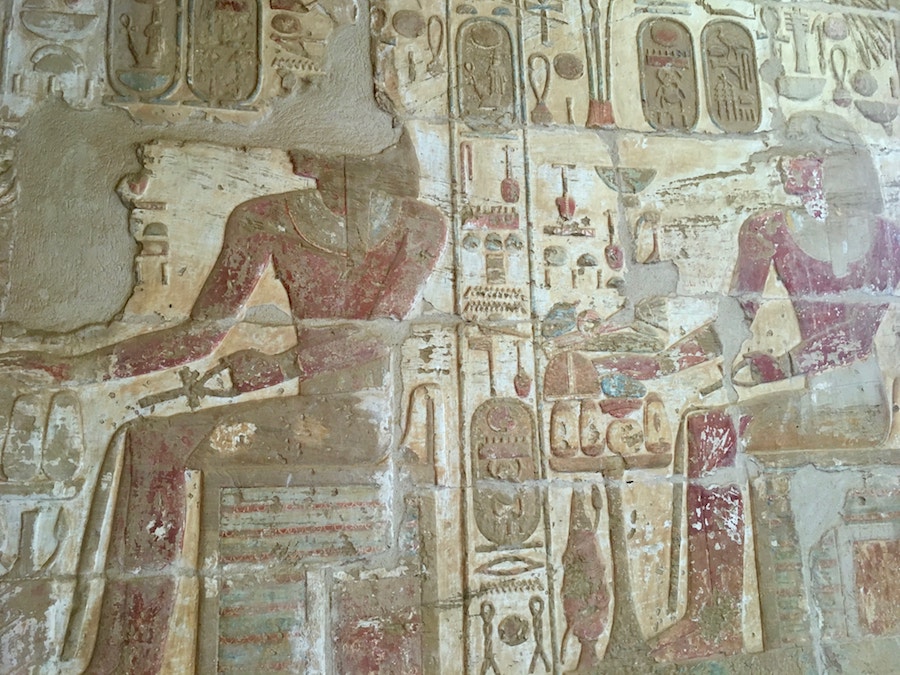

The reliefs inside the temple are in great condition. Along the walls, you can see gods like Re and Amun holding up an ankh symbol to the mouth of the king.
In my opinion, the temple is definitely worth the journey over!
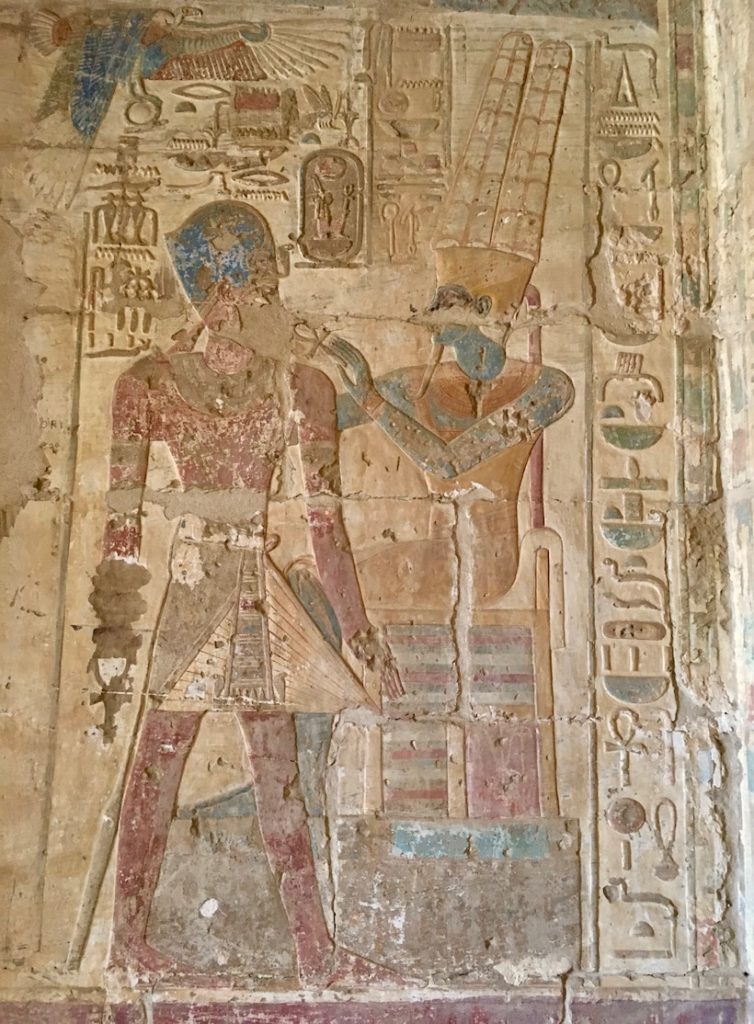

Vulture's Rock
On your way back to the entrance, be sure to stop briefly for a look at Vulture’s Rock. Not only is the rock formation unique, but it also contains some of Egpyt’s oldest writings.
Inscriptions include ancient prehistoric petroglyphs from around 6,000 years ago. Old Kingdom visitors left their mark as well, and the rock even contains the name of Sneferu!
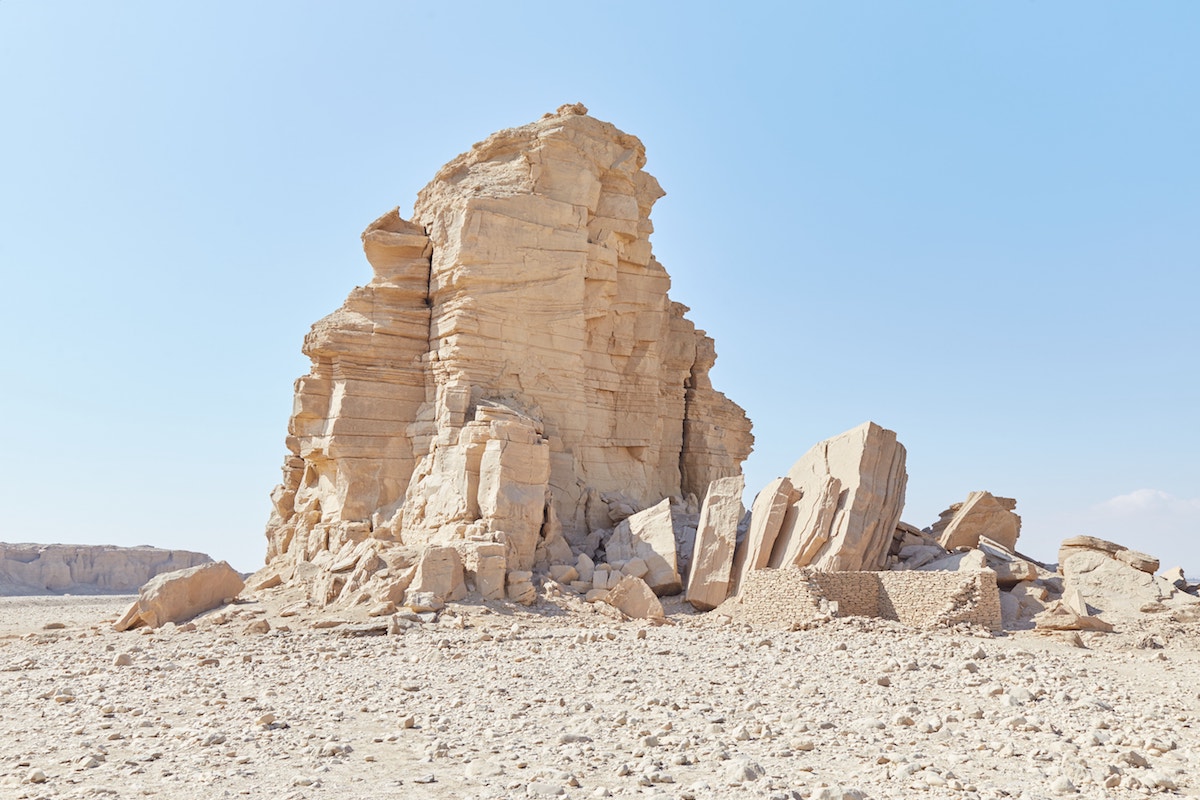
This rock formation likely served as a temple in ancient times. And according to inscriptions from the 6th Dynasty, the area was long used for astronomical observations.
Unfortunately, the staff member in the car with us told me that the rock is strictly off-limits to tourists. He was adamant that I stay far away from it, but I at least convinced him to let me take some photos from the road.
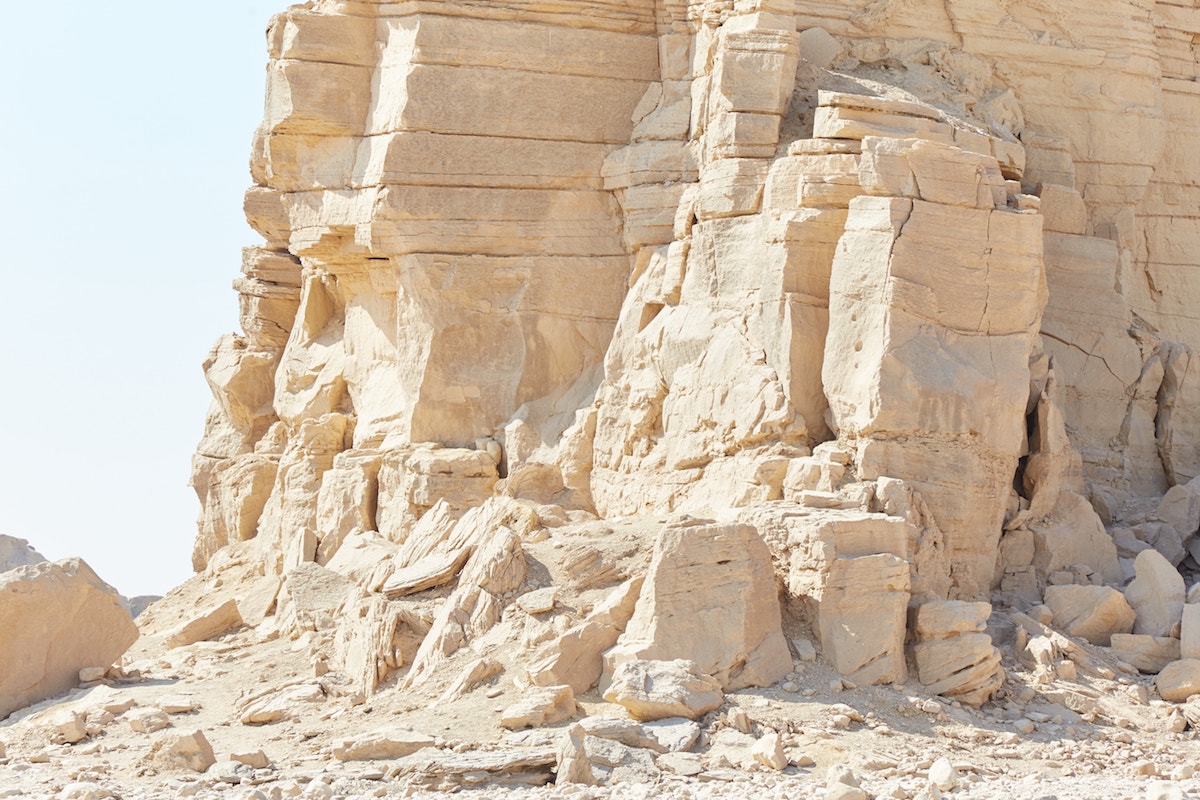
Making our way back to the highway, we headed south again toward the excellent temples of Edfu and Kom Ombo. And then we finally made it to our final destination of Aswan later in the day.
All in all, it’s well worth the extra time and expense to make the journey from Luxor by vehicle.

Additional Info
As mentioned above, I visited four sites on my journey from Luxor to Aswan: Esna, El Kab, Edfu and Kom Ombo. Before my trip, I’d read various accounts of people visiting Edfu and Kom Ombo on the way, but not all four.
Thinking it would be impossible to see all four sites on the same day, I’d originally set a day aside to see Esna and El Kab on their own before returning to Luxor. But a local travel agent advised me that this was unnecessary.
And now having done it, I can confirm that seeing all four sites is easily done while still getting to explore the temples at a relaxed pace.
Another interesting site to see on the way is the sandstone quarry of Gebel el-Silsila, though I thought it might be pushing it to include it in my itinerary. But looking back, there still would’ve been enough time.
I was staying on the west bank of Luxor, and I arranged the trip through a company called Classic Tour Services. Everything went smoothly and I’d recommend them to anyone staying on the west bank.
With the four destinations included, I paid around $150. The price only included a driver and no guide. I was able to take my time at each location, while the driver dropped me off at my Aswan hotel at the end of the day.
In Luxor, the east and west banks of the Nile River couldn’t be more different. The east is the bustling city center where most of the hotels and restaurants are located. This is where you’ll find the train station and the Luxor Museum. And of course, Karnak and Luxor Temples.
The west bank is much quieter and less developed. But overall, the west bank has more tourist attractions. Not only are all the tombs here, but there are plenty of mortuary temples to visit as well. While you can see everything on the east bank in a single day, you’ll need two or three full days to explore everything on the west bank.
That’s why I recommend staying on the west bank. And as the area gradually develops, there are a lot more hotels to choose from nowadays.
Overall, the west bank is pretty spread out. But if you stay close to the ferry port, you’ll get the best of both worlds. Not only will you get a head start on visiting the west bank attractions each morning, but getting to the east side and back will be easy as well.
To really make the most of your time in Luxor, I recommend staying on the west bank, getting the Luxor Pass (see above) and renting a bicycle. You can rent a bicycle for the day from numerous west bank shops at somewhere between 30 – 50 EGP.
I stayed at a place called Sunflower Guest House which was right by the ferry port. The rooms were spacious and clean and I had no issues with my stay. But after my arrival, I discovered that there are plenty of other accommodation options right nearby.
For those who still want to stay on the east bank, Bob Marley Guest House seems to be the most popular place for backpackers. And those with a much bigger budget tend to stay at the Winter Palace.
When researching accommodation online, I was surprised to discover that hotels in Aswan are considerably more expensive than in other Egyptian cities.
While I cam across some reasonably priced and centrally located hotels, many of them seemed to have poor reviews. I went ahead and booked a midrange hotel on Elephantine Island, but the hosts never responded to any of my questions, leading me to cancel.
Eventually, I decided on a place called David Hostel located in the south of the city. While I’m not much of a hostel person, this turned out to be a good choice.
Not only did I meet some nice people, but David the owner was incredibly helpful in regards to advice on sightseeing and transport. He was upfront and honest about all the different options and helps his guests get the local prices when possible.
While I thought it would be a bit out of the way, I found the location to be completely reasonable. It was close to places like Seheil Island, and most of the locations in central Aswan were still walkable. There were also plenty of decent and affordable restaurants nearby.
For those with more money to spend, there are lots more luxurious options around Aswan. The most famous of them is the Cataract Hotel, where Agatha Christie famously stayed when she wrote Death on the Nile.
Aswan isn’t that big. Aside from staying in the city center around the train station, Elephantine Island would be a good choice as well. It features plenty of hotels and guest houses, while it’s just an easy ferry ride to the city center. It’s also home to a luxury resort called Movenpick.

Pin It!
